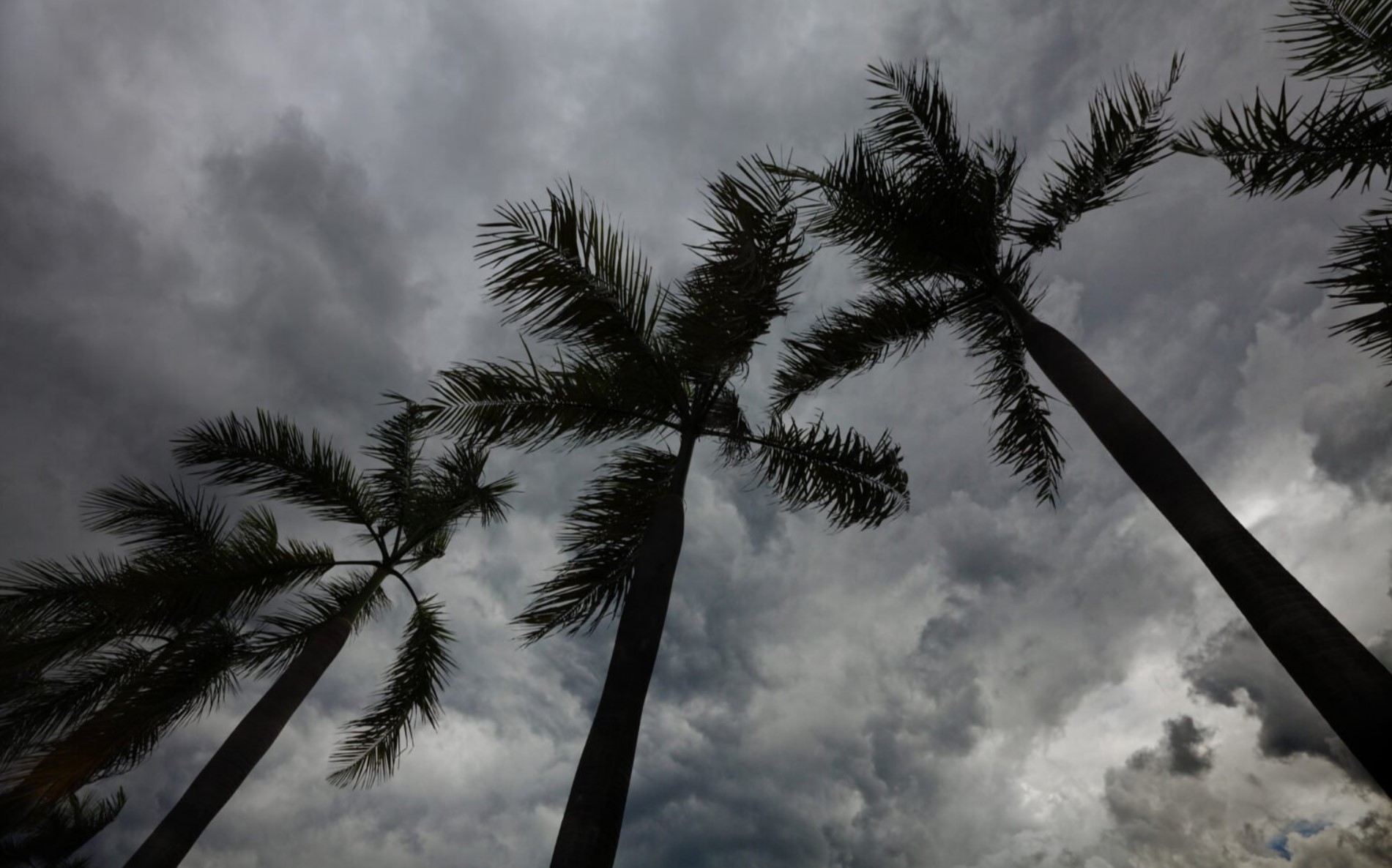Co-hosts of TV talk show “The View” recently mocked Florida’s Republican governor for asking for federal aid in the wake of the devastation Hurricane Ian. Mockingly they asked “Isn’t it socialism when the government helps you?”
Governments of all ideological stripes are supposed to help their citizens. The big policy questions are when, where, and how government is supposed to try to help and, when it does try, does it actually aid citizens or only further burden them.
But I can see why the co-hosts are confused. Socialism always fails, just like the US government does, including in the arena of emergency management. Remember the Katrina fiasco? The policies of the US Army Corps of Engineers made the storm’s effects worse than they had to be and FEMA’s response was belated and feeble. Recall former President Trump tossing rolls of paper towels in Puerto Rico, while many thousands remained without electricity a full year after Hurricane Maria wrecked the power grid of that island U.S. territory?
Such episodes raise serious doubts about the effectiveness of current disaster policies. Such policies’ cost inefficiency is even more troubling. Emergencies have become politicized due to incentives built into the 1988 Stafford Act, which committed the federal government to pay 75 to 100 percent of disaster costs with minimal cost oversight. Unsurprisingly, pressure to declare disasters has increased and costs have ballooned, stressing the nation’s Disaster Relief Fund. Every dollar unnecessarily spent or wasted on one disaster means a dollar not available to aid victims of the next natural calamity, less money available for other government programs, or higher taxes, including inflation.
I do not think that “global climate change” proponents have made their case, but if they prove correct and Americans are subject to more storms or more intense ones, then anyone who wants to “keep people safe” will have to support changing the nation’s disaster relief system if a more effective and efficient approach exists. And indeed one does.
That better approach relies on private initiative, markets, and insurance instead of ineffective government bureaucracies and bloated budgets. Literally every aspect of disaster relief can be privatized, or rather re-privatized, and should be, if policymakers want to save lives and money.
Ever wonder how people handled emergencies before the federal government began to “manage” them? Common sense, charity, and private insurance worked in concert.
Common sense means allowing prices to rise after disasters, so that private parties have incentives to stockpile necessities or to find innovative but relatively expensive ways to deliver them to areas made inaccessible by busted bridges, downed power lines, and the like. Competitive prices, given the circumstances, will prevail so long as artificial barriers to entry are battered down. It’s better to pay $10 for a bottle of water than to have no potable water at all. FEMA’s “free” water isn’t free to taxpayers and it isn’t free to victims who perish from thirst or drinking contaminated water.
Common sense also entails not building flimsy but expensive permanent structures in areas subject to flooding, high winds, earthquakes, and such. Build it to last the blast or keep it cheap, so when the bayou bubbles all you lose is a wooden shack, one you can replace yourself, or with a little help from friends.
Formal private charity can also help hard-luck cases efficiently, carefully providing just enough resources to return the most needy to independence. Unlike government aid, which is expected to flow freely, especially to those who took big risks, private charity does not create a large moral hazard. Nobody builds a mansion on the edge of an active volcano expecting a bailout from the local church. But that church can easily aid the recent widow who cannot access her bank account due to widespread power outages.
The bulk of emergency aid and preventative services should come from private insurers, both life and property companies. They do not even need a government backstop, because they long ago learned how to spread their risks through reinsurance and retrocession (essentially insurance on reinsurance) contracts and alternative risk transfer markets. Overregulation has made it difficult, though, to properly price risk. All else equal, people who build in places more likely to suffer from a natural disaster need to pay a higher premium than those who build in safer, but perhaps less scenic, spots.
If unfettered by regulators, for example, life insurers could inform insureds that a dangerous storm is on the way and if they do not evacuate their premium will increase, say, $500.00, and suggest instead that the insureds spend the money driving to hotel upstate, or visiting relatives outside the danger zone. Wouldn’t that work better than an unenforceable evacuation mandate?
Life, health, and property insurers would also have incentives to form disaster relief consortia to minimize post-disaster losses and claims. The consortia would act like private emergency agencies did in the nineteenth century, before insurance regulators got too heavy-handed. Banding together spreads costs and eliminates the need to check insurance cards before providing aid. Insurance consortia effectively and efficiently fought fires, aided ships-in-distress, and helped farmers after their crops or herds met with disaster.
Even more importantly, risk insurers were able to reduce the chances of damage and death in the first place by providing insureds with economic incentives to take safety precautions, like employing fire-proofing technology or hiring only sober ship captains. They could not take on such roles again tomorrow, but over time, deregulation and these alternative provisions could reduce the federal backstop mandated by the Stafford Act by ten percentage points per year.
With the possible exception of some aspects of military defense and criminal justice, anything the government can do, the private sector can do better. Anything the government can’t do, which is most things, the private sector can do, perhaps not perfectly, but well enough. That includes disaster relief.
Source: AIER
Robert E. Wright is a Senior Research Fellow at the American Institute for Economic Research. He is the (co)author or (co)editor of over two dozen major books, book series, and edited collections, including AIER’s The Best of Thomas Paine (2021) and Financial Exclusion (2019). He has also (co)authored numerous articles for important journals, including the American Economic Review, Business History Review, Independent Review, Journal of Private Enterprise, Review of Finance, and Southern Economic Review. Robert has taught business, economics, and policy courses at Augustana University, NYU’s Stern School of Business, Temple University, the University of Virginia, and elsewhere since taking his Ph.D. in History from SUNY Buffalo in 1997.
Selected Publications
- Reducing Recidivism and Encouraging Desistance: A Social Entrepreneurial Approach of Journal of Entrepreneurship and Public Policy (Summer 2022).
- “The Political Economy of Modern Wildlife Management: How Commercialization Could Reduce Game Overabundance.” Independent Review (Spring 2022).
- “Sowing the Seeds of a Future Crisis: The SEC and the Emergence of the Nationally Recognized Statistical Rating Organization (NRSRO) Category, 1971-75.” Co-authored with Andrew Smith. Business History Review (Winter 2021).
- “AI ≠ UBI Income Portfolio Adjustment to Technological Transformation.” Co-authored with Aleksandra Przegalinska. Frontiers in Human Dynamics: Social Networks (2021).
- “Liberty Befits All: Stowe and Uncle Tom’s Cabin.” Independent Review (Winter 2020).
- “Pioneer Financial News National Broadcast Journalist Wilma Soss, NBC Radio, 1954-1980.” Journalism History (Fall 2018).
- “Devolution of the Republican Model of Anglo-American Corporate Governance.” Advances in Financial Economics (2015).
- “The Pivotal Role of Private Enterprise in America’s Transportation Age, 1790-1860.” Journal of Private Enterprise (Spring 2014)
- “Corporate Insurers in Antebellum America.” Co-authored with Christopher Kingston. Business History Review (Autumn 2012).
- “The Deadliest of Games: The Institution of Dueling.” Co-authored with Christopher Kingston. Southern Economic Journal (April 2010).
- “Alexander Hamilton, Central Banker: Crisis Management During the U.S. Financial Panic of 1792.” Co-authored with Richard E. Sylla and David J. Cowen. Business History Review (Spring 2009).
- “Integration of Trans-Atlantic Capital Markets, 1790-1845.” Co-authored with Richard Sylla and Jack Wilson. Review of Finance (December 2006), 613-44.
- “State ‘Currencies’ and the Transition to the U.S. Dollar: Clarifying Some Confusions.” Co-authored with Ron Michener. American Economic Review (June 2005).
- “Reforming the U.S. IPO Market: Lessons from History and Theory,” Accounting, Business, and Financial History (November 2002).
- “Bank Ownership and Lending Patterns in New York and Pennsylvania, 1781-1831.” Business History Review (Spring 1999).
Find Robert
- SSRN: https://papers.ssrn.com/sol3/cf_dev/AbsByAuth.cfm?per_id=362640
- ORCID: https://orcid.org/0000-0003-3792-3506
- Academia: https://robertwright.academia.edu/
- Google: https://scholar.google.com/citations?user=D9Qsx6QAAAAJ&hl=en&oi=sra
- Twitter, Gettr, and Parler: @robertewright

